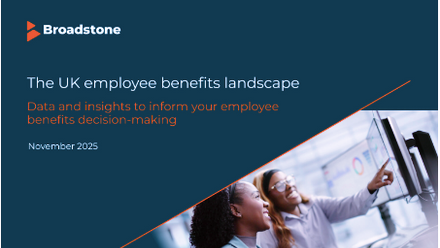How group risk benefits provide financial resilience and more
Group risk insurers provide a whole host of additional health, wellbeing and support services. These are all designed to supplement an employer’s health and wellbeing programme and can be used daily by employees, line managers, HR and business owners alike, even if a claim is never made. So as a workplace benefit, group risk protection is excellent in terms of offering tangible value to employers and employees – value that can be utilised every day.
Embedded services can include access to an employee assistance programme, a second medical opinion, nurse-led support, vocational rehabilitation, fast-tracked counselling and physiotherapy, an online GP, health apps, HR and line manager support and more – all designed to complement an employers’ health and wellbeing programme. Employers may also find that a group risk purchase gives their employees access to discount vouchers, financial education and wellbeing tools, a debt consolidation service or a pay advance scheme.
So, along with the insurance itself, these services all merit unwrapping, integration into HR policies and protocols, and a firm place in the employer supportive kitbag.
Pros for employers
The pros for employers of doing this include:
- provision of meaningful, highly valued benefits at relatively low cost
- help with engagement, recruitment and retention by providing benefits that demonstrate a caring attitude and deliver on this
- provision of additional health and wellbeing support at no extra cost
- group income protection provides absence management, case management, independent adjudication of whether an absence is genuine, mediation, return-to-work advice and support, line manager/HR training and support, and retention of talent
- when insured, these benefits are tax efficient, transfer risk to a third party and bring consistency and known costs for budgeting purposes, and access to experts and advice that may not be available in-house
- efficient use of embedded services rather than stand-alone purchases can release pockets of money to spend elsewhere.
Pros for employees
For employees, this route to insured protection benefits is incredibly advantageous as it:
- provides access to those who may not be able to afford it and for those who have health conditions that might mean they would be declined or charged extra premiums for cover under a consumer policy
- offers financial security for employees and their families
- provides help in maintaining their standard of living should the worse happen
- offers additional help and support that can be used every day.
Work it, work it, work it
In terms of getting best value from group risk benefits, it’s vital for employers to fully understand everything that comes along with their purchase and how best to embed it within their organisation and encourage its use by communicating what’s there to help on a regular basis That way, access to help and support is front of mind when employees need it.
It does what is says on the tin
Stats from GRiD’s Claims Survey 2023 show that last year there were 261,631 interactions with additional help and support services funded by group risk insurers. Of these, 27% involved access to counselling, and 13% were related to illness, and 5% to legal issues.
5,651 employees were helped back to work in 2022 following a period of sickness absence. 4,257 of these people were able to go back to work within six months due to an active early intervention paid for by the insurer (39.1% of all claims submitted); of which, 47% had help to overcome mental illness, and 10% had support overcoming a musculoskeletal condition.
The group risk industry paid out £2.21bn (£6.05m a day) in 2022 to 30,500 families. Families who faced the toughest of times but who didn’t then have to add financial devastation to their burden – all thanks to employers with the foresight to include group risk protection benefits in their kitbag.







